"JUAN LUNA
SHRINE BADOC ILOCOS NORTE"
 The Juan Luna
Shrine in Badoc, Ilocos Norte, is a reconstruction of the two-storey house in
which the patriot and foremost Filipino painter was born on October 24, 1857
(The original house burned down in 1861). Luna was the son of Joaquin Luna and
Laureana Vovicio. He was instrumental in placing Philippine art and culture on
the world map. Luna began his formal art training at the Ateneo Municipal
Escuela de Bellas Artes and Escuela Nautica in
Manila
. In 1877 he left for
Madrid
,
Spain
, to continue his studies at the Academia de Bellas Artes de San Fernando. It
was during this period that he painted "Dafne y Chloe," which won the
Silver Palette Award from the Centro Artistico-Literario de Manila.
The Juan Luna
Shrine in Badoc, Ilocos Norte, is a reconstruction of the two-storey house in
which the patriot and foremost Filipino painter was born on October 24, 1857
(The original house burned down in 1861). Luna was the son of Joaquin Luna and
Laureana Vovicio. He was instrumental in placing Philippine art and culture on
the world map. Luna began his formal art training at the Ateneo Municipal
Escuela de Bellas Artes and Escuela Nautica in
Manila
. In 1877 he left for
Madrid
,
Spain
, to continue his studies at the Academia de Bellas Artes de San Fernando. It
was during this period that he painted "Dafne y Chloe," which won the
Silver Palette Award from the Centro Artistico-Literario de Manila.
Other major awards established Luna's reputation as a master painter both in the
Philippines
and
Europe
. These included the gold medal at
Madrid
's National Exposition of Fine Arts in 1884 for "Spoliarium" and a
special gold medal award at the Barcelona Exposition in 1888 for "La
Batalla de Lepanto," a work commissioned by the Spanish Senate. Among his
notable paintings were: "The Blood Compact" and "People and
Kings". Juan Luna was a co-worker of Rizal,
Lopez-Jaena
,
Del
Pilar and other Filipino reformers in
Europe
. He was in the Diplomatic Service of the First Philippine Republic. In 1896
Juan Luna and his brother General Antonio Luna were arrested by the Spanish
authorities for subversion. During his eight months in prison he painted many
canvasses, among them, "Ecce Homo," a sensitive portrayal of Christ.
Luna died in Hong Kong on December 7, 1899 and his remains were interred in 1953
in niche no. 73 at the Sala de Profundis in San Agustin Church, Intramuros,
Manila
.
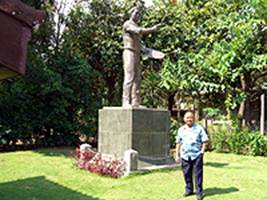
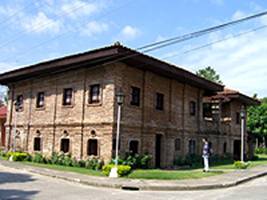
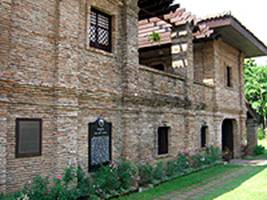

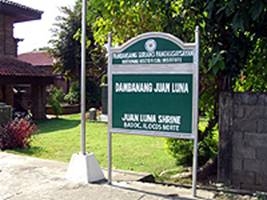
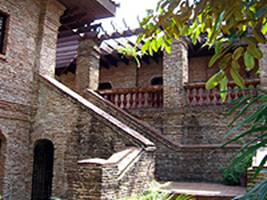

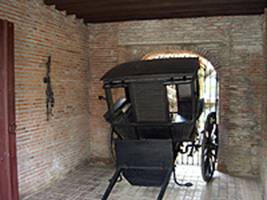

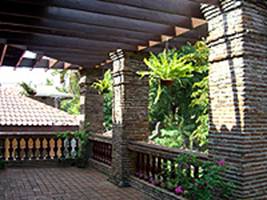

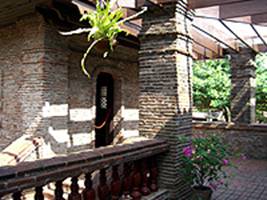
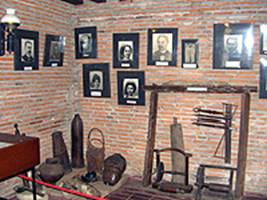

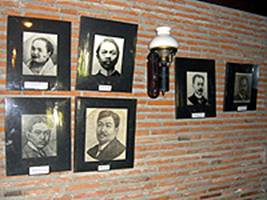
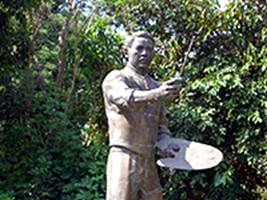
The
main entrance of the Juan Luna Shrine opens into the alcove just before the
family gallery. Photographs on the walls show the damaged original house and how
teams of construction workers rebuilt it. In the family gallery are vintage
photographs of the Luna clan, including Juan Luna's son, Andres. The museum also
uses the family gallery to display household artifacts from Luna's time. Another
section of the lower floor holds reproductions of Luna's two large works -
"Spolarium" and "El Pacto de Sangre." There are also
portraits of his wife, Paz Pardo de Tavera, and national hero Jose Rizal.
The
staircase leads up to the living room, bedrooms, azotea and a mini chapel. The
living room is furnished in period furniture and accessories. The master bedroom
contains the four-posted bed used by Luna. Outside, facing the azotea, is the
bedroom which Luna once shared with his brothers. At the grounds of the shrine
is a monument of the painter.
 The Juan Luna
Shrine in Badoc, Ilocos Norte, is a reconstruction of the two-storey house in
which the patriot and foremost Filipino painter was born on October 24, 1857
(The original house burned down in 1861). Luna was the son of Joaquin Luna and
Laureana Vovicio. He was instrumental in placing Philippine art and culture on
the world map. Luna began his formal art training at the Ateneo Municipal
Escuela de Bellas Artes and Escuela Nautica in
The Juan Luna
Shrine in Badoc, Ilocos Norte, is a reconstruction of the two-storey house in
which the patriot and foremost Filipino painter was born on October 24, 1857
(The original house burned down in 1861). Luna was the son of Joaquin Luna and
Laureana Vovicio. He was instrumental in placing Philippine art and culture on
the world map. Luna began his formal art training at the Ateneo Municipal
Escuela de Bellas Artes and Escuela Nautica in 














